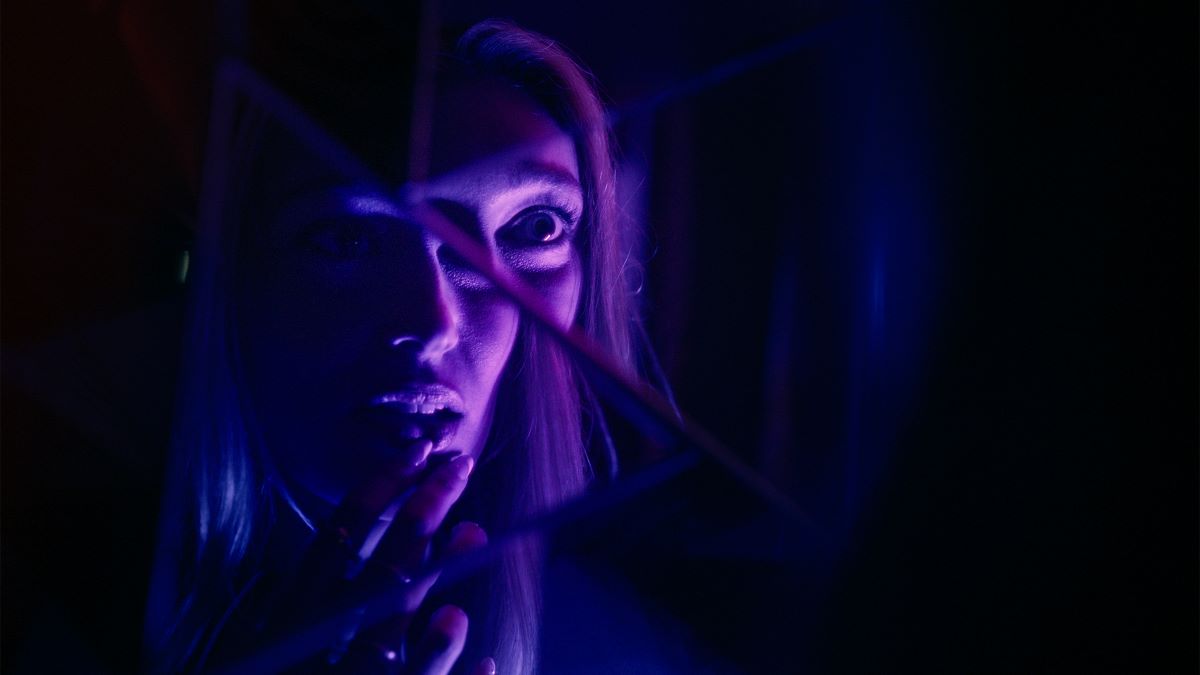Midnights at Sundance is usually the place where not just frights reside, but arresting concepts that speak to our terrors and desires. The three films outlined in this dispatch are deeply invested in those sensations, pulling from them for reimaginings of the cabin in the woods frame and Satanism. Even the rom-com isn’t safe from this program’s grasp.
From “The Blackening” to “Bodies Bodies Bodies” and “Talk to Me,” game nights gone wrong has been a major cinematic trend lately. Writer/director Greg Jardin’s “It’s What’s Inside” walks in those same footsteps when a few old college friends gather at a forested manor to celebrate the upcoming marriage of their engaged friend Reuben (Devon Terrell). Once they arrive, old rivalries rekindle and new love simmers before boiling over when Forbes (David Thompson), a buddy the group hasn’t seen for eight years due to a scandal involving his sister, turns up for a high-concept role playing game. It’s a smart premise not pushed to its most extreme conclusion, rendering “It’s What’s Inside” a confused jumble of debauchery without reason.
Being mindful of spoilers, here are the dynamics at play: Of the eight friends, we intently follow partners Shelby (Brittany O’Grady) and Cyrus (James Morosini). Despite Shelby trying her best to sexually please Cyrus, who may still be in love with his college sweetheart Nikki (Alycia Debnam-Carey), a blonde influencer, he has rejected Shelby’s advances. While Shelby is initially afraid to try Forbes’ game, Cyrus is totally up for it, seeing an opportunity to test boundaries. It’s not until Cyrus sees how easily the game can be manipulated that he changes his mind. But by that point, it’s far too late.
You can probably guess this film has a grisly side, leading to a bevy of accusations and hurt feelings. Jardin is fairly content remaining in that register, relying on nauseating circling pans and overstimulated split screens to add color and shape to the increasingly incoherent backstabbing. Without spoiling until the very end, “It’s What’s Inside” also remains crushingly heteronormative. There are further complications about identity to be mined from this concept, but Jardin doesn’t seem interested in exploring those. He’s far more interested in using the final twist to fashion a half-baked explanation for what we just watched, rendering “It’s What’s Inside” a thematically incoherent romp whose immediate pleasure fizzles once the lights come up.

“Satanists, they’re just like us,” could easily be the tagline of writer/director Scott Cummings’ surprisingly meditative documentary, “Realm of Satan” (which was technically in the NEXT program but could have easily fit in Midnights.) Cummings paints a contemporary portrait of the Church of Satan, one that begins with a provocative bang—we witness the live birth of a goat—but soon settles into normalcy. It’s the routine, caught in vérité-style rather than talking head, that most interests the filmmaker. The quiet, unhurried pace will definitely offer varying mileage for anyone entering this film expecting exploitation hijinks. I would imagine the subject matter too will throw many off as well.
One myth Cummings dispels early on is that the Church of Satan trades in malicious practices. In actuality it’s an atheistic society, steeped in counterculture and intersectional beliefs, whereby individuals are expected to take responsibilities for their own lives.
An editor by trade, on films like “Never Rarely Sometimes Always” and “Monsters and Men,” in “Realm of Satan,” Cummings jumps between continents with ease, bridging Satanists together by their shared devotion to an organization founded in 1966 by Anton Szandor LaVey. With one subject, an entertainer in a spook show, Cummings employs editing tricks, such as a woman disappearing or card magically appearing, that would make Georges Méliès swell with pride. It’s one of the many ways the filmmaker plays with the perception of Satanist for mordant humor.
Cummings also captures these believers in ornate homes, maximalist apartments, and bare dwellings, showing the variety of style approaches toward being a Satanist. He also observes ceremonies led by High Priest Peter Gilmore, and even gives a glimpse of how this society is often the victim of persecution. While not for everyone, it’s clear Cummings has respect for the Church of Satan, treating the subject with care, grace, and genuine interest. In every sense, “Realm of Satan” is an eye-opening encounter.

Though “Your Monster,” writer/director Caroline Lindy’s horror fairytale rom-com, certainly isn’t short on heart, it does run thin on details. It’s a shame because the film begins so assuredly when Laura (Melissa Barrera), a musical performer, is picked up from the hospital by her flakey best friend Mazzy (Kayla Foster). Laura is going home to recover from cancer surgery and a broken heart. The latter was caused by her director/playwright ex Jacob (Edmund Donovan) whose pitiful bedside manner involved breaking up with her to finish production on the musical they wrote together. Alone and in pain in her brownstone, she hears a thumping upstairs. When she goes to investigate, she discovers her imaginary childhood monster (Tommy Dewey), a shaggy sort of fellow with a sarcastic wit.
While the monster is an intriguing element to include in a rom-com, Lindy often carries the monster symbolism too far: He is the shorthand for Laura’s scant backstory—outside of a domineering mother we’re short on any family life—her existential battle with cancer, and all of the ways people have walked over her. The narrative pressure is more than a character, who’s mostly a snarky second banana, can shoulder. The same can be said of the heightened Sirkian emotion Lindy aims toward. The melodrama runs high here, matching not only the character’s love of classic Hollywood technicolor filmmaking, but also the turbulent state of her life.
From lavish musical numbers to amorous cheek-to-cheek dances, “Your Monster” is working on a big romantic scale. At times, Lindy is aware of the heights she’s asking Barrera to reach. This is a film that can never be accused of taking itself too seriously. But, at other points, when the heartache pulsates close to the surface, the director demands too much of her actress. Even the enjoyable scenes of merriment between Laura and her monster wear thin when it becomes clear, though the monster is an extension of Laura, the character is deriving a great deal of her agency, her freedom, and personhood from this male companion. You ultimately wish there was more in their relationship that could make the surprisingly bloody ending more fulfilling.












